Buying SIM Cards or eSIMs in Southeast Asia
We may earn a commission from purchases you make after clicking links on this site. Learn more.Need to make a few calls or update your Instagram on the move in Southeast Asia, but don’t want to pay ridiculous international roaming rates? Good news if you have an unlocked phone: in much of the region, local SIM cards are cheap and easy to find.
Data speeds are variable but often quite fast, especially in major towns and cities. In some places, they’re noticeably quicker than what you’ll get from your hotel Wi-Fi. Local calls and texts are usually very cheap if you need them.
Here I cover the basics for each country, based on real-world experience throughout Southeast Asia. In each case, I recommend a major mobile carrier that one of us has used and recommend, and share the costs, data speeds, and general experience you’re likely to have.
Need travel insurance for Southeast Asia?
Need travel insurance for Southeast Asia?
Travel eSIMs are becoming increasing popular, and I’ve now used a bunch of them across the region and the world. You’ll pay more for a given amount of data, but especially if you’re only in a country for a week or two, there’s often not much in it. Most iPhones can use them, as can many Android devices.
Because eSIMs are far more convenient than lining up at airport kiosks after a long flight or hunting down a phone store later, I figured it was worth discussing that option as well.
For each country, I’ve mentioned the companies that are offering the best value from those I’ve personally used and can vouch for.
Finally, a few affordable multi-country options are starting to emerge, especially when it comes to eSIMs. Depending on how long you’re in the region for, and how much data you need, these can be a cheaper, simpler alternative to buying individual SIMs in each country. I talk about those at the end.
Thailand
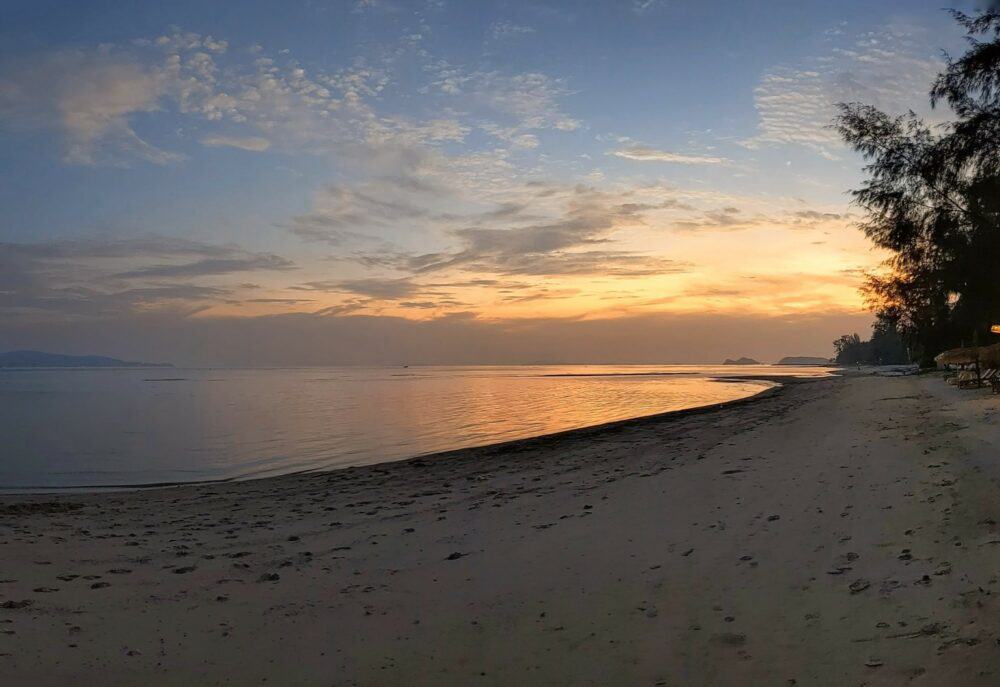
I Recommend
1-2-Call (the prepaid brand of AIS) or Happy (the prepaid brand of dtac)
Costs
A wide range of call and data packages are available, depending mainly on how long you’re in the country, how much data you need, and where you’re purchasing.
As an example, a Happy tourist SIM at Bangkok airport with 30GB of LTE data valid for a month cost 599 baht including tax (~$17) last time I was there. The options at the airport either provide unlimited data at a lower speed, or a fairly large amount of data at maximum speed, for a given length of time.
They all come with a domestic call allowance as well, either some amount of credit or a certain number of minutes. You’ll typically pay a bit more for AIS and a bit less for Truemove (the other main provider in the country), but there’s not a lot in it.
Whichever company you use, you’ll find noticeably more, cheaper options if you’re happy to wait until you get into town and purchase at an official outlet or convenience store.
How
As mentioned above, the only SIMs available at airports in Thailand are tourist-focused. As in many places, you’ll pay a premium for these tourist SIM packages, and will get better deals at official AIS or Happy retail stores or many (not all) convenience stores.
Thailand introduced stricter regulations for SIM card purchases a few years ago. You’ll need your passport, plus have your photo taken, to get the card registered and activated. If you’re not asked for this, the SIM is already registered to someone else, and could be shut off at any time.
For all the details, read our full guide to buying a SIM card or eSIM in Thailand.
Topping Up
The easiest option by far is to go to a convenience or mobile phone store showing the AIS or dtac logo. Once there, you can top up via a printed voucher or scratch card. If you’re struggling to understand the process, the staff member will be able to help (if they don’t just do it for you in the first place).
It’s also possible to top up at ATMs, Thailand Post, and via each company’s app or website, but I’ve always struggled to get these to consistently work.
Data Speeds
LTE is available almost everywhere, and is generally pretty fast. I’ve regularly seen download speeds approaching 100Mbps, at least outside major population centers like Bangkok and Chiang Mai. 5G rollout has started as well, although for now you’ll generally only find it in large cities.
Travel eSIM Alternatives
- Nomad
- 7 days: 15GB for $9 (1-15GB available)
- 30 days: 10GB for $22 (3-50GB available)
- Airalo
- 10 days: 50GB for $9.90
- 15 days: Unlimited calls/texts/data for $19.95
Cambodia

I Recommend
Costs
With Cellcard, the SIM card costs a dollar, and $4 gets you 25GB of data valid for 28 days. If you’re in the country for a week or less, you’ll only need to pay $1.50 for 15GB of data. Smart has similar packages for similar prices.
All of the plans come with at least 100 domestic calling minutes and 100 texts, and some come with many more of both.
Tourist SIM options are also available from both providers for $5, offering at least 25GB of data plus plenty of calls and texts.
If you’re in the country for less than 15 days, go with either company. If you’ll be there for longer and particularly want a tourist SIM, get it from Smart: their version lasts for 30 days.
How
When arriving at Phnom Penh airport pre-pandemic, a Cellcard booth was on your right as you left baggage reclaim. The person working there on the day I turned up spoke excellent English, and set everything up for me in a few minutes at no extra charge.
That booth wasn’t there last time I visited, but there is one selling Smart SIMs. Reent reviews suggest it’s rife with scams, however, so I’d probably suggest waiting until you get into town (or using a travel eSIM) instead these days.
If you are arriving elsewhere, Cellcard and Smart signs are everywhere, even in smaller towns. I purchased a card from official stores in Kampot and Phnom Penh, and it was a quick, simple affair in both cases. Your passport will be required.
For more details, read our full guide to buying a SIM card or eSIM in Cambodia.
Topping Up
Just find a shop displaying a Cellcard or Smart sign in the window. They’re not exactly hard to track down: chances are you’ll pass a couple on your way to breakfast.
In theory it’s possible to topup online using your credit card with both providers. I’ve never felt the need to test it, given how ubiquitous the physical store options are, but the option is there if you want it.
Data Speeds
LTE is available in most of the country, with 5G starting to slowly be rolled out in major centers. Expect slow speeds, or nothing at all, once you start getting remote. I had good download speeds in smaller centers like Kampot, approaching 50Mb/s, but things were noticeably slower in Phnom Penh.
Travel eSIMs
- aloSIM
- 7 days: 1GB for $5
- 30 days: 5GB for $13.50 (3-5GB available)
- Airalo
- 7 days: 1GB for $4.50
- 30 days: 5GB for $13.50 (3-5GB available)
Laos
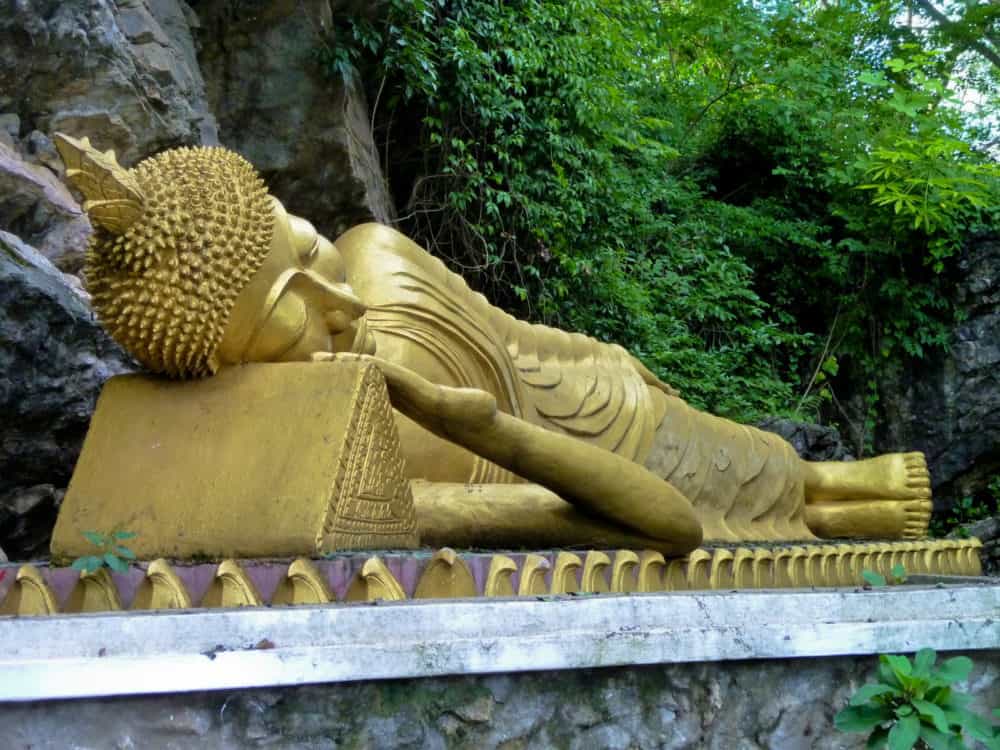
I Recommend
Costs
The SIM card costs around 10,000 kip (50c), with a small amount of data and call credit included. 30GB of data costs 50,000 kip (~$2.50), valid for 30 days.
Domestic calls aren’t included, but they only cost 300kip (~1.5c) per minute: just top up with a bit of extra credit at time of purchase if you think you’ll need them.
There are many other call and data packages available, including even cheaper alternatives if you’re only in the country for a week or two. Just grab a brochure from any official Unitel store (in most medium-sized towns) for the details.
How
If you’re flying into Luang Prabang or Vientiane airports, buying a SIM is straightforward: there are booths for all providers just before you exit into the arrivals hall. You’ll pay more for your SIM here, as usual in airports all over the world, but it’s still not exactly expensive.
If you’re arriving in Laos overland, or just want to wait until you get into town so you can get a better deal, just look for Unitel signs in a shop window and ask for a SIM card.
You can seek out an official store if you’d like to, but most convenience stores and third-party phone stores should be able to help.
New registration rules came into force in 2021, meaning you now need to show your passport at time of purchase so that the SIM can be registered to you.
After buying the card itself, you’ll need to top up with enough credit to cover the data package you want to buy, then activate it by texting a specific code. The staff member may offer to do this for you, but it’s not hard if you need to do it yourself.
For the 30GB package shown above, for instance, you’d text *209*123#. The full list of codes is in the brochures mentioned earlier, or on the website.
Topping Up
As with buying the SIM card, refills are available at any store showing a Unitel sign. Just buy a top-up card, scratch off the silver coating, and follow the (English) instructions.
Data Speeds
LTE service is reasonably widespread, but speeds vary significantly. You’ll generally get better speeds the closer you are to a major city, especially Vientiane, but no guarantees. There’s no 5G rollout as yet.
Travel eSIMs
Vietnam
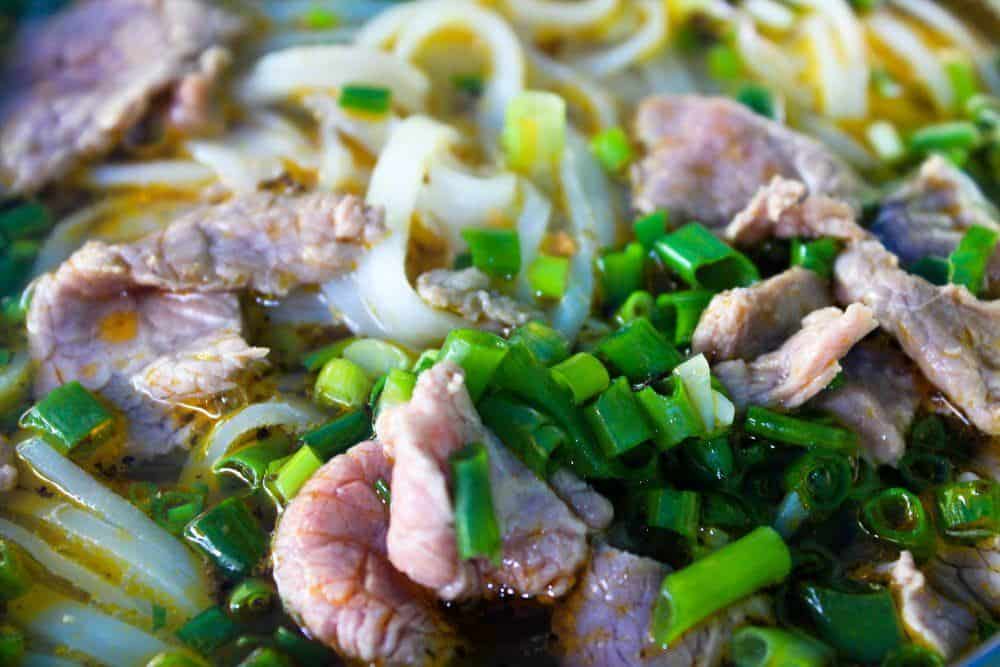
I Recommend
Costs
You can buy SIMs at all of the international airports, including those in Ho Chi Minh City, Hanoi, and Danang. You’ll pay more for the convenience, but not prohibitively so.
Last time I flew into Danang, for instance, all of the stalls were displaying the same price: 180,000 VND (~$8) for a SIM with unlimited data valid for a month, 200,000 VND (~$9) for one with a phone number.
In town, a Vinaphone SIM with 100GB of data cost 100,000 VND, while a Viettel SIM with 4GB of data per day and a phone number cost 150,000 VND. The latter came with free calls to other Viettel numbers and 60 minutes of calls to other domestic carriers. Both packages were valid for a month.
There are plenty of other options available if you buy at an official store, with expiry dates from a day to a year in length: just ask what the current deals are when you walk in.
How
Outside the airports, you can buy a SIM card on pretty much every corner. You’re more likely to find someone who speaks English in tourist areas, but given that this is where you’ll likely be staying, that’s not a big deal.
Be warned, however, that you’re legally required to show your passport and have the SIM card registered to you, something that has been more strictly enforced in recent years.
Most phone and convenience stores (and airport kiosks) typically can’t or won’t do this, which means you risk having it cut off without warning.
As a result, I’d recommend buying your Viettel SIM in an official carrier store if you want to be sure it’ll keep working throughout your stay. If you’re not in Vietnam for long and are happy to roll the dice, you can buy the SIM anywhere you like: just don’t be shocked if it stops working at some point.
That said, last time I was in the country, I did decide to risk it just because there wasn’t a Viettel store anywhere near where I was staying. My SIM stayed active throughout my month-long stay, so take that for whatever it’s worth.
For more details, read our full guide to buying a SIM card or eSIM in Vietnam.
Topping Up
You can top up at any mobile phone shop: just look for the Viettel signs. The staff member will almost certainly do the top-up for you if you ask.
Data Speeds
LTE coverage is widespread throughout the country, and I’ve had download speeds approaching 50Mbps at times. They’re definitely slower in Ho Chi Minh City and to some extent Hanoi, though: with that many people around, it’s no great surprise that speeds drop a bit.
Travel eSIMs
- Nomad
- 7 days: 1GB for $4
- 30 days: 10GB for $22 (3-50GB available)
- Airalo
- 15 days: 2GB for $7
- 30 days: 10GB for $21 (3-20GB available)
Burma/Myanmar
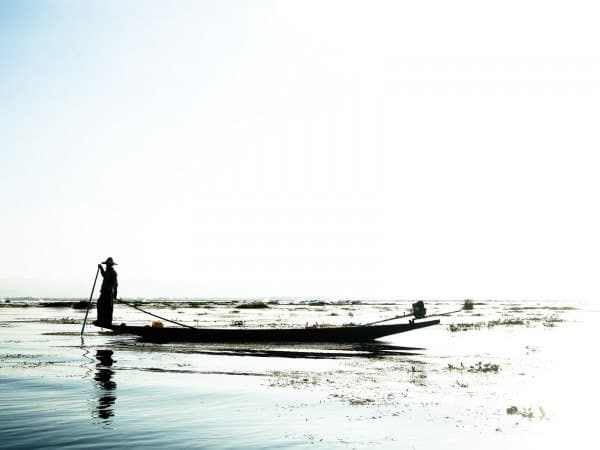
Of all of the countries in Southeast Asia, this is the most rapidly changing for telecommunications (and almost everything else).
Only a decade or so ago, it was essentially impossible for foreigners to buy SIM cards, and costs were so high and service so poor that there wasn’t much point even if you could.
With new entrants to the market and plenty of foreign investment, the situation changed dramatically for the better for several years. Since the military coup in 2021, however, there has been significant internet censorship, data shutdowns, and general service instability.
As a result, while I’m including prices and other details below, don’t assume that you’ll be able to easily get online. A good VPN will help avoid the worst of the censorship, but it won’t help if service has been throttled or disabled entirely.
“Do not travel” warnings from a wide range of governments mean we’re not able to return to update prices and details, either, so our on-the-ground experience is now several years old.
I Recommend
Costs
1500 kyat (~70c) will get you an LTE SIM, with a minimal amount of credit on it. While you can pay for calls, texts, and data at a casual usage rate if you’ve got credit loaded on your SIM, you’re better off choosing one of the many packages on offer and buying it at the same time.
As an example, you’ll pay 9899 kyat (~$5) for a little under 5GB of data, valid for a month.
For more details, read our full guide to buying a SIM card in Myanmar.
How
You can buy SIM cards from any of the major vendors, including Ooredoo, in the arrivals hall at the airport in Yangon when you fly in.
If you’re arriving overland or want to wait until you get into town, any cellphone shop in a tourist area should be able to help. English may not always be spoken, but I didn’t have any problems when I was buying mine just down the road from my guesthouse in Yangon.
Passports are now officially required, as SIM cards need to be registered to the person using them.
Topping Up
You’ll find Ooredoo signs everywhere, so it’s easy to top up at a local shop on the street. Cards are available in 1000, 3000, 5000, and 10,000 kyat denominations, and are good for 30 days.
Data Speeds
Data speeds vary widely depending on where in the country you are, and whether you’re inside a building. Oordeoo doesn’t cover the entire country, so don’t expect coverage everywhere you go.
Malaysia
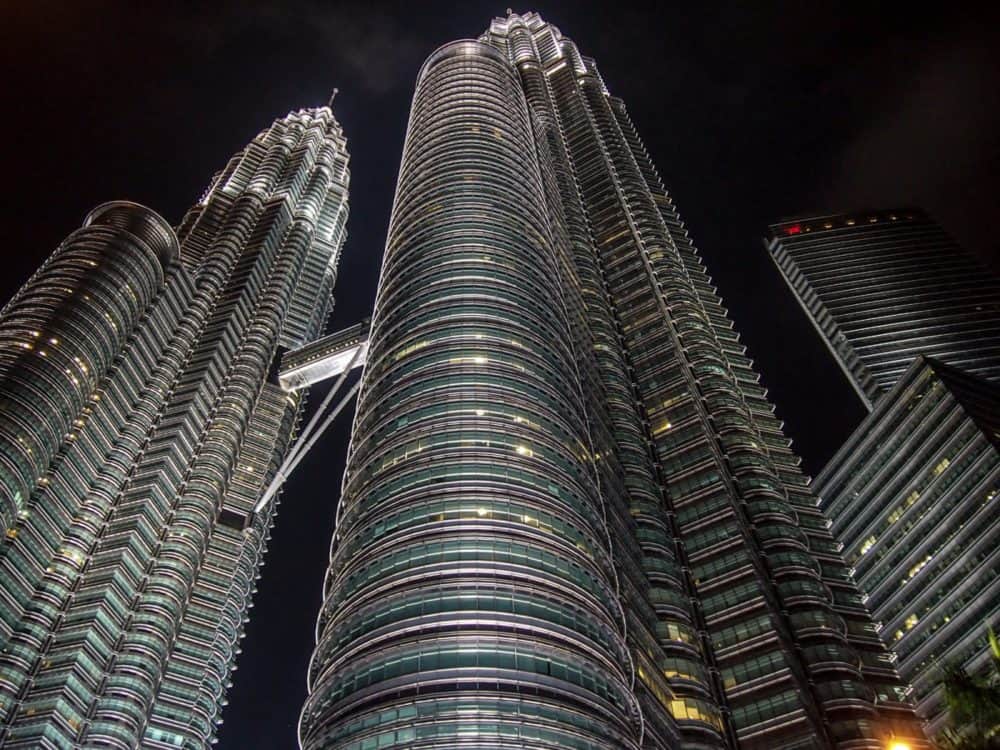
I Recommend
Hotlink (the prepay brand of Maxis) or Xpax (the prepay brand of Celcom)
Costs
With Hotlink, the SIM card costs 10MYR ($2.50). 45MYR ($10) gives 75GB of data valid for a month, along with unlimited domestic calls. Xpax prices are about the same. There are plenty of other options as well, including some packages that provide unlimited slow-ish internet at cheaper prices.
How
You can buy a SIM and package almost anywhere you see the Hotlink/Xpax logos, which is likely to be several times per city block. If the particular store you pick doesn’t sell it, just walk a few meters down the road.
I’ve bought mine in several different places over the years, most recently from a small store inside Centre Point Mall in Kota Kinabalu after arriving overland from Brunei.
You can also get them from vendors in all of the international airports on arrival, albeit with fewer options about which package you buy. No matter where you buy it, you’ll need your passport so the SIM can be registered to you.
For more details, read our full guide to buying a SIM card in Malaysia.
Topping Up
You can top up anywhere you see a store with the right logo: as mentioned above, they aren’t hard to find. The vendor will likely do it for you if you’re struggling to understand the process.
Data Speeds
Fast LTE data service is available throughout the country, including Malaysian Borneo. You’ll only drop back to something slower (or nothing at all) in very remote areas: it really was pretty rare not to have coverage anywhere that was populated.
Travel eSIM
- Nomad
- 7 days: 1GB for $4
- 30 days: 10GB for $15 (3-50GB available)
Singapore
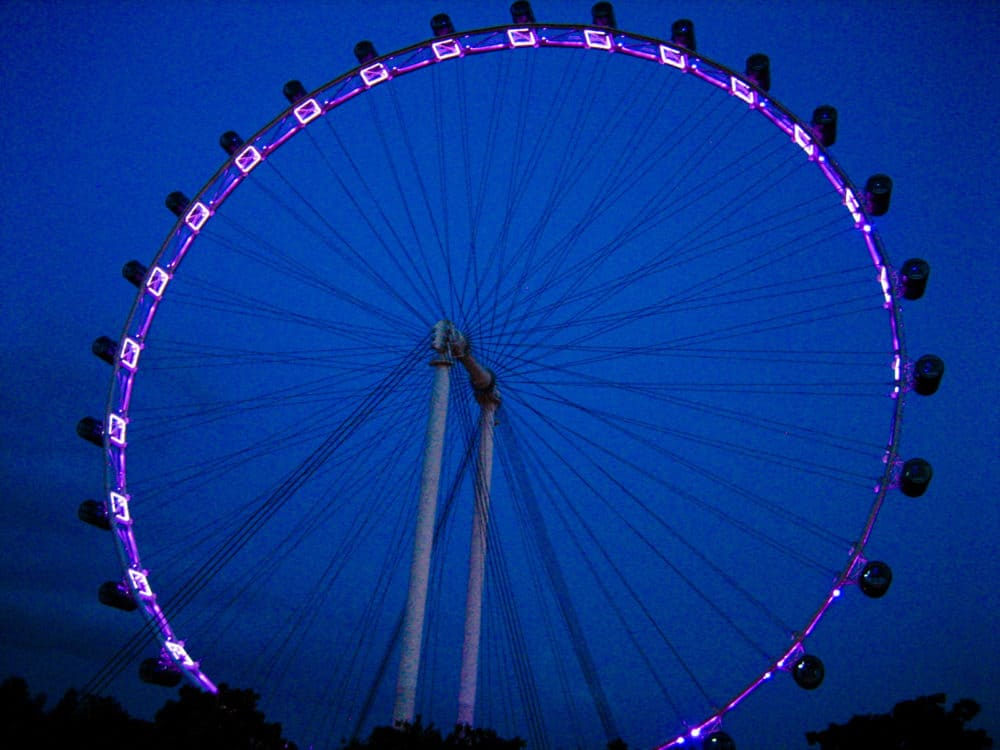
I Recommend
hi! Card (Singtel’s prepaid service)
Costs
A SIM card with 108GB of data (100GB of bonus data valid for 28 days, 5GB valid for the first 30 days, 3GB valid for 120 days) costs $15 SGD ($11 USD).
You also get $15 SGD of credit, to use for making calls and texts. Note that the 100GB of bonus data can take up to three days to be credited to your balance.
This card is available at Changi airport, plus Singtel stores, 7-Eleven, and elsewhere in the country. Other packages are available, including a Singapore tourist SIM with 100GB of data, local calls, and other benefits for $15 SGD.
It’s valid for a week, so might make sense if you’re only in town for a few days.
How
Certain packages are available at Changi airport, including the ones I mention above, but not all. If you don’t see the one you want, just wait until you get into the city: there should be enough free Wi-Fi around to tide you over until then.
I’ve found 7-Eleven the most ubiqitous and easy place to buy SIMs outside the airport, but you can likely do it most places you see the Singtel logo. You’ll need your passport so that the SIM can be registered in your name.
Topping Up
Topping up is straightforward: just find anywhere that sells the SIM cards and tell the staff member how much you need. Top-up amounts start at $10 SGD.
Data speeds
LTE speeds are typically extremely fast with Singtel, and it’s rare to notice much of a slowdown even in busy areas. 5G has been rolled out across Singapore as well, so if your handset supports it, you’ll be able to access it even with a prepaid SIM.
Travel eSIMs
- Nomad
- 3 days: unlimited for $15 (1-7 days available)
- 30 days: 10GB for $17 (3-50GB available)
- Airalo
- 7 days: 1GB for $4.50
- 30 days: 10GB for $18 (3-20GB available)
Indonesia
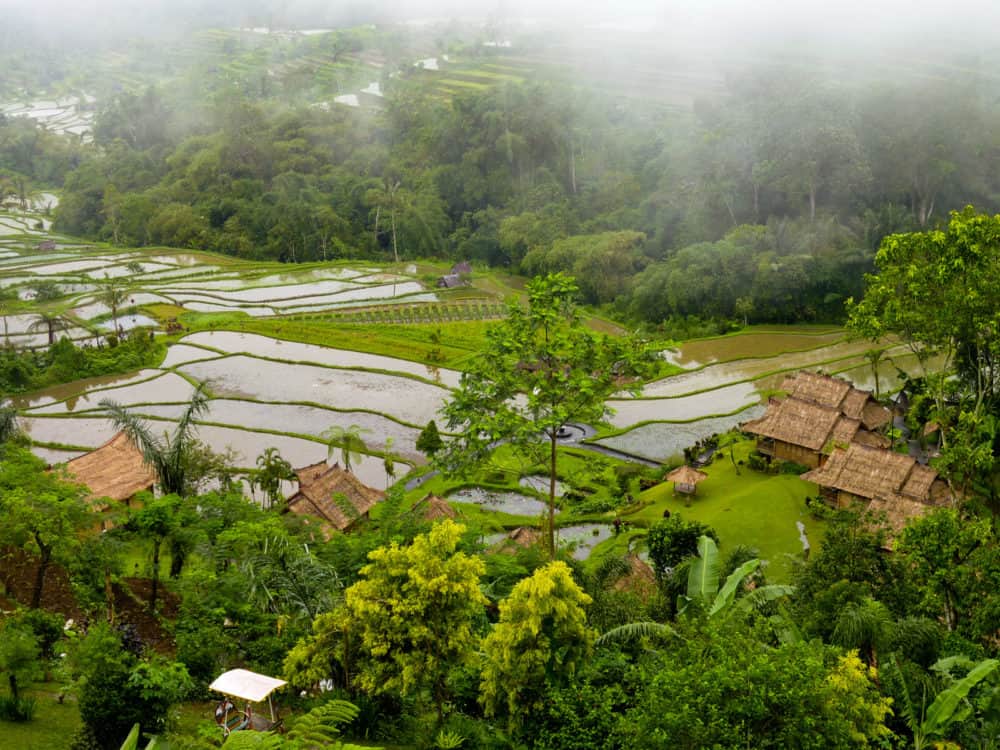
I Recommend
Costs
It’s possible to buy a SIM card for under a dollar and top up with as much credit as you need. As a tourist, however, you’re more likely to be offered a SIM and data pack.
These packs are particularly expensive at international airports, especially Bali. They should be much cheaper when purchased elsewhere, but you’ll have much more difficulty with registration at unofficial outlets. More on that below.
In theory, you can get e.g. 11GB of data valid for 30 days, with 60 minutes of calls and 200 texts, for 32,000 IDR ($2). In reality, though, accessing that price as a foreign tourist is impossible at the airport, and often very difficult elsewhere.
It’s not unusual to see price hikes of 500% or more, or only the most expensive tourist SIMs on offer. On Bali, this kind of price gouging has extended beyond the confines of the airport: even many of the official Grapari stores charge foreigners far more than the actual rate.
How
You can buy SIMs most places you see the Telkomsel sign, and no passport is needed to complete the purchase process. Using the SIM, however, is a different story.
You now need to register your SIM at an official store or a small number of other locations, showing your passport to do so, or risk service getting cut off within a few days. As a result, you may as well buy your SIM at an official store in the first place.
SIM registration can be done at some airports, but again, you’ll pay a lot more to purchase there in the first place.
For this reason, more than anywhere else in Southeast Asia, I now recommend that anyone staying less than a month should just use a travel eSIM (below) if their phone supports it, and avoid the hassle entirely.
For more details, read our full guide to buying a SIM card or eSIM in Indonesia.
Topping Up
Just follow the signs. Topping up at a convenience store is even easier than buying the SIM in the first place, and you’re less likely to be overcharged when you do it.
Data Speeds
LTE is widely available in Bali and many other parts of Indonesia, with speeds extremely fast at times (downloads in excess of 80Mbps in Ubud, for instance). You won’t get that kind of service everywhere, especially in more remote spots, but it’s surprisingly good, surprisingly often.
Travel eSIM
- Nomad
- 7 days: 1GB for $4
- 30 days: 10GB for $20 (3-50GB available)
Brunei
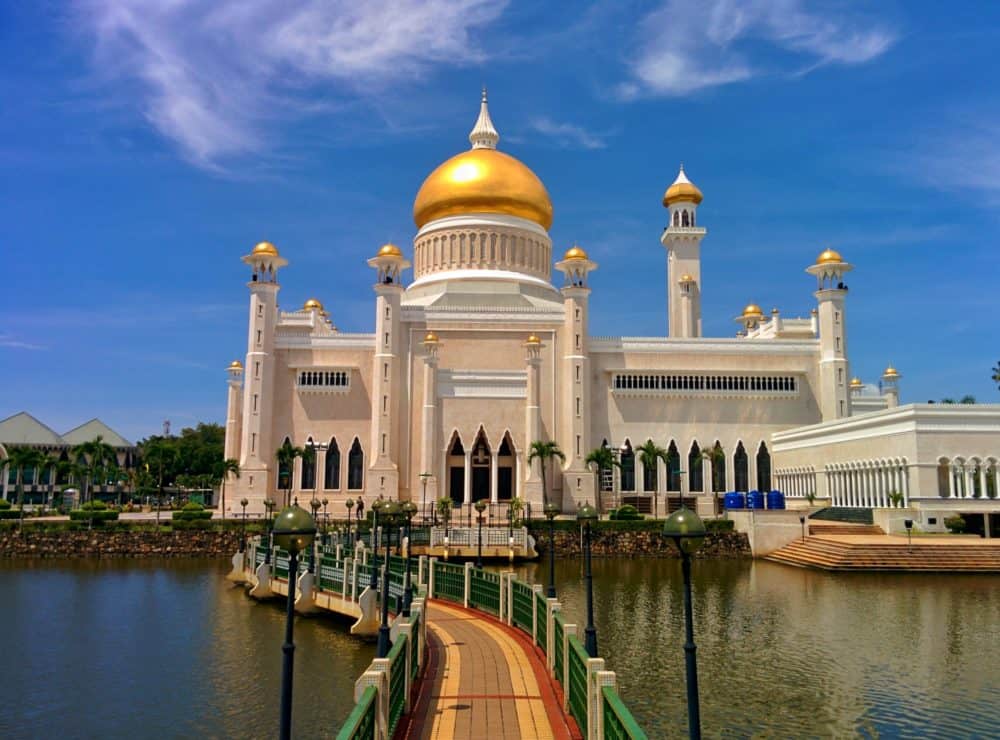
I Recommend
Costs
In a refreshing change of pace from most places in the world, you’ll pay the same amount for your SIM at the airport in Brunei as you will elsewhere in this small country.
The Progresif Tourist SIM will set you back $15 BND ($11 USD), with 4GB of data and 30 minutes of local calls, valid for a week. That’s not an amazing deal, but if you’ll be in the country for seven days or less and don’t need a lot of data, it’s still the cheapest option.
This is one place where a travel eSIM (below) may be cheaper, depending on how long you’re in the country and how much data you need.
How
Given there shouldn’t be a price difference, most visitors should just buy their SIM at the airport when they arrive. The kiosks are on the ground floor and are rarely busy, so it doesn’t usually take long.
Because I was being picked up by my guesthouse owner and the flight was already delayed, however, I waited until I got into town and went to a store in a nearby mall instead. The process was quick and painless, so feel free to do it either way.
You’ll need to show your passport so the SIM can be registered to you.
For more details, read our full guide to buying a SIM card or eSIM in Brunei.
Topping Up
Topping up is easy to do, either online on the Progresif website, or by dropping into either an official store or anywhere else displaying the Progresif logo.
Data Speed
Since 2020 all of the providers use the same physical infrastructure, which means you can expect the same coverage with each. 4G/LTE networks cover much of the country, with 5G rolling out in larger cities.
Travel eSIM
- Nomad
- 7 days: 1GB for $7
- 30 days: 5GB for $18 (3-20GB available)
Philippines

I Recommend
Costs
The cost of a Globe SIM card varies, depending on where you’re buying it, but it should be around 50 pesos (roughly $1 USD) at a 7-Eleven.
There are many types of prepaid plans, depending on how you plan to use your phone. Unlimited text, unlimited calls, data plans, and more are all available.
Plans are generally pretty cheap. As an example, a 12GB data pack with unlimited calls and texts that’s valid for a week costs 149 pesos (~$3). A 15GB pack with no calls or texts, valid for 15 days, costs 250 pesos.
How
Convenience stores like 7-Eleven or authorized retailers should be able to sell you Globe SIM cards. However, general merchandise stores (Filipino: sari-sari store) might serve you better outside of the major cities. They’re on every street corner, even in small towns and villages.
You won’t need to bring your passport or other form of identification with you to buy the SIM, but you’ll need it (along with a Wi-Fi connection) to register and activate it on your carrier’s SIM registration portal.
It’s a bit of a hassle, but ultimately a simple-enough process, and thankfully it doesn’t take long to do.
For more details, read our full guide to buying a SIM card or eSIM in the Philippines.
Topping Up
Asking someone to “top up” your phone might cause some confusion. The local word for prepaid phone credits is “load” and in the Philippines, you “buy load”.
Scratch cards are available in various denominations from convenience and sari-sari stores, but for most visitors, the easiest way to top up is to head to a 7-Eleven and use the CLiQQ e-Money terminal that you’ll almost certainly find inside.
These terminals let you buy call/text/data packs for all the major carriers: you just choose the one you want on the screen, then give the receipt to the cashier and pay for it.
Data Speed
5G and LTE are fine in metro Manila and other large cities, with download speeds of around 30Mbps not uncommon. Outside that area, it’s hit and miss. In some provinces, data service works pretty well, while elsewhere it’s unbearably slow or non-existent.
Travel eSIM
- Nomad
- 7 days: 1GB for $4
- 30 days: 10GB for $17 (3-50GB available)
Get regular updates from the world of travel tech and remote work
News, reviews, recommendations and more, from here and around the web
Multi-Country SIM Cards and eSIMs for Southeast Asia
When it comes to roaming in neighboring countries, local SIM cards in Southeast Asia really are a bit of a mixed bag.
A few providers have one or two packages that include some sort of roaming, others only offer it at expensive casual rates or with an add-on pack, others don’t provide it at all with prepaid SIMs.
It’s all a bit of a hassle to navigate, not helped by the fact that in my experience, most staff members don’t know a lot about the roaming options, what is and isn’t covered, and how much it costs. That’s especially true outside official stores, but sometimes even at them as well.
Unless you can do it online, topping up outside the country of origin is often difficult or impossible as well. That’s less of a problem on shorter trips, but anything longer than a month is likely to cause an issue.
All of that said, just because it’s difficult to do with local SIMs doesn’t mean it’s impossible to do at all. As is often the case when there’s a gap in the market like this, other companies have stepped in.
While it’s generally still cheapest to buy local SIMs in each country if you’re staying for a while, travelers moving more quickly should consider the following:
- SIM Options provides a data-only physical SIM that works throughout Southeast Asia, with 10GB of data valid for 14 days for $49.90.
- aloSIM has an eSIM that covers Thailand and Malaysia, along with Taiwan, South Korea, and Hong Kong. Prices start at $5 for 1GB valid for a week, going up to 10GB for $27 valid for a month.
- Airalo‘s regional eSIM covers more countries: 14 in total, including all of the places mentioned above with the exception of Myanmar and Brunei. Prices start at $5 for 1GB for a week, going all the way up to 100GB valid for six months for $185.
- Nomad‘s SEA-Oceania eSIM covers most of the countries mentioned above, plus Australia and New Zealand. Prices start at $6 for 1GB for a week, going up to 30GB valid for two months for $60.
So there you have it, the basics of buying a SIM card or eSIM that works in every country in Southeast Asia. Of course there are other options available beyond the ones I recommend: if you have first-hand experience of them, feel free to share in the comments!
Check out our guides to buying SIM cards in many other countries here.
Main image via nextvoyage, other images via author

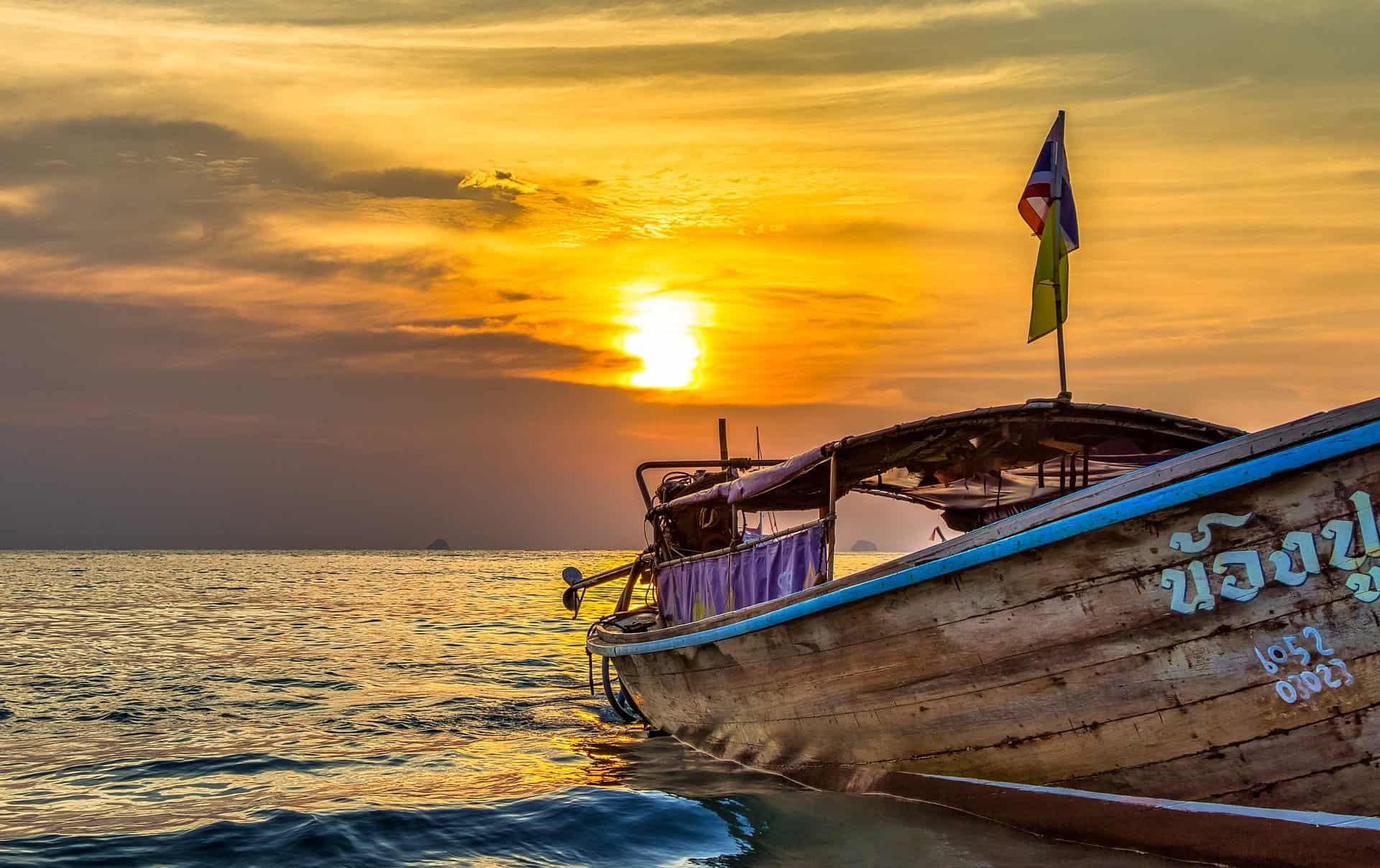

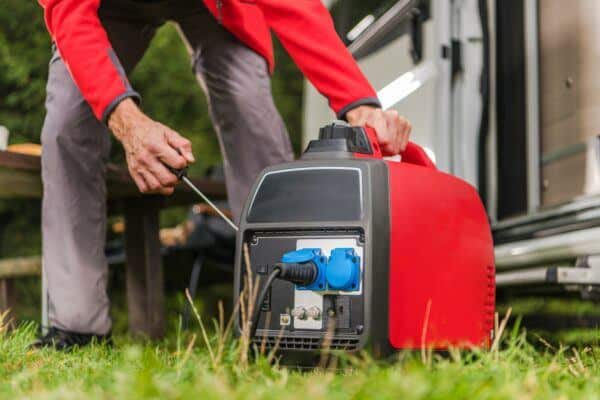
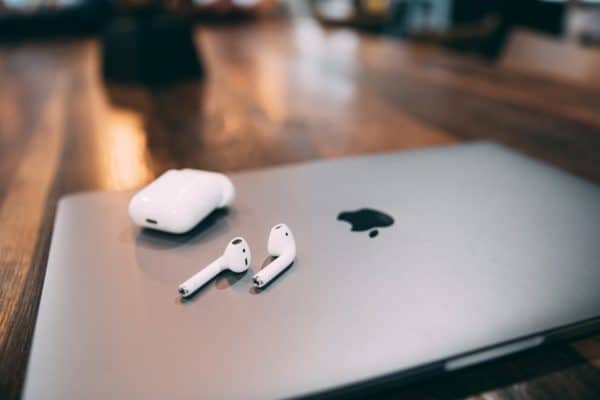
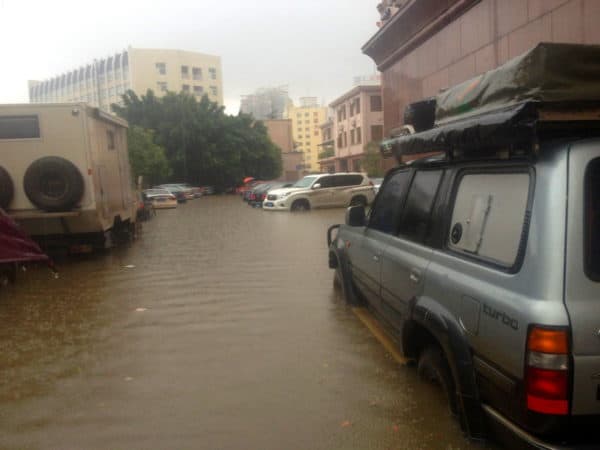
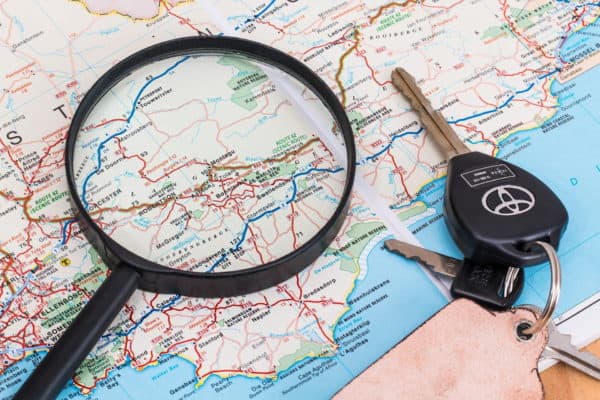
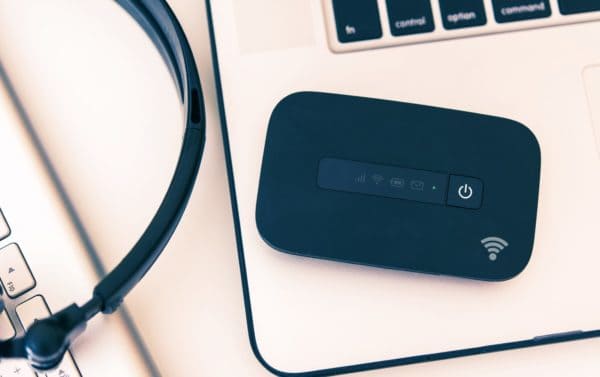
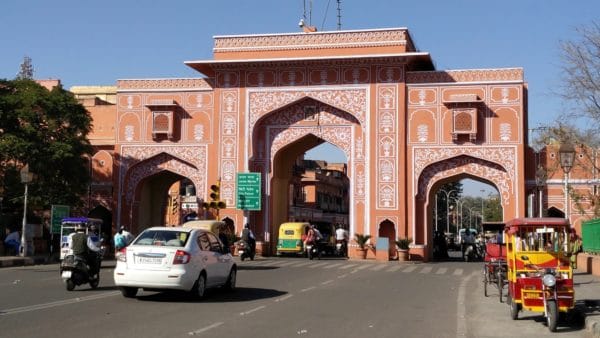
Thanks for this Dave, in Thailand I had mixed performance with 3G on the iPhone. True-H seems the most reliable for 3G and it simply does not work on all carriers. I am not sure about Happy, haven’t tried. For those with iPhone 3GS, understand that this is a model that did not sell a lot in SEA and some companies simply won’t support it.
Thanks for the info, Andre. I actually used an iPhone 3G (not S) with a Happy SIM when I was in Thailand in 2010, and never saw the magic 3G symbol at all. It did work fine with Edge, however.
I picked up my Happy Sim a few days ago in Thailand, and on my Galaxy S3 I got good 3G coverage and speeds in Bangkok. Not tried the rest of the country yet, will report back 🙂
That’s really interesting, Laurence – did you need to do anything special to enable 3G, or did it just work out of the box? And which package did you buy?
It just worked out of the box. I’ve not bought a package yet – I went for the happy internet SIM which came with 10 hours of internet as part of the package. When that’s used up, I’m going to go for the 399 baht unlimited package, which gives a month of unlimited 3G data, with the provisio that you get 3G speeds for the first gigabyte, and drop down to Edge beyond that. Given the availability of wifi in Thailand, that should be fine for my needs 😀
As promised, three months of Thai holiday later, time to report back 🙂 I got good HSUPA (or whatever the acronym is) across most of Thailand, except for the more rural parts where it dropped back to EDGE.
I did learn a couple of things. Happy offer two types of package – a time based one and a data based one. The time based one lets you buy different amounts of time, valid for a month. For example, you can buy 70 hours of time which remains valid for a month for 200 baht. This is capped to 384kbps to prevent overload, but that was more than enough for what I wanted it for.
Alternatively, you can buy what they call an unlimited data package, which gives you what they call unlimited data for a month. This runs at true 3G speeds, up to 42Mbps, for the first gigabyte, and is then capped at a rather glacial 64kbps until the end of the month. It also costs more like 399 baht.
How about minicards for iPhones? Easy to find!?
In Thailand (sorry to hijack this one Dave!), the guy at the place I bought my card from had a sim cutter, and he just cut my sim down to the micro sim format to fit my Galaxy s3 on the spot for no extra charge. Not sure what the deal is with the new nano sim format though.
In many countries in SE Asia you can pick up a micro-SIM at the same place as you pick up standard SIMs (eg: 7-11). If not, the carrier’s mobile stores will almost certainly have them, and failing both of those options, someone will cut it down to size for you (or there are about a million videos and guides online on doing it yourself if necessary).
I don’t think a 300 minute deal (Thailand) is a good choice these days, now we are always online and with that SIM it will only last for half a day. You can get 1GB volume without time limit for 350 baht or unlimited volume for 799 baht per month as a prepaid SIM. There are some more volume bundles, but those two are the most interesting i think. To activate it you just a get a normal SIM at 7/11 and use a UUID code to pick a data plan, for example for 12Call (AIS) those codes are:
1GB/350Baht: *133*22#
2GB/550Baht: *133*23#
Unlimited/799Baht: *133*24#
you need to put credit on your phone first to activate those plans of course, so get a SIM and just buy some recharge cards right away, dial in the credits and then pick a plan. If you stay longer than a month you need to make sure that you have enough credit one (two, three, ..) month after activation, sop best is to set yourself a reminder. If you run out of volume before the month is over things can get a bit messy, i.e. you can end up with two subscriptions on the same number.
If you pick the 550 baht one or above you also get free AIS wifi access for a month, which is nice if you like to sit in cafes with your laptop. The coverage of wifi hotsports is pretty extensive for Bangkok.
Sometimes 3G isn’t activated and you need to dial *300
Similar offer are available from DTAC and TRUE of course,
There is a link with all details, but usually those stop working after a few month when they decide to redesign their website, those short codes are likely to work for a long time, prices might drop.
http://www.ais.co.th/mobileinternet/en/internet-package/#2
Thanks for the detailed info, Jan. Totally agree that 300 minutes is insufficient – I burned through mine within a day. They’re a good starting point for an extra 20 baht, but nothing more.
I actually usually turn the data off on my phone when I’m not using it here in Thailand – helps save a few bucks for the larger data packages, and battery life as well.
Good point about the AIS wifi as well – if you’re in areas with significant coverage, it could be a great choice.
Cheers!
Thanks a lot, Dave! I was planning to do some research and do a blogpost on it, but that’s not needed anymore 🙂 You don’t happen to have some info on a philippines sim, do you?
No problem! The Philippines info is coming – I actually meant to include it (oops!). I’ll update the post when I receive it. 🙂
Great, thanks Dave!
And done. 🙂
Can you recommend a SIM in India?
I can’t personally – anybody else with personal experience, please feel free to chime in!
Hi, In India, the major providers are Airtel, Vodaphone, BSNL, IDEA, TATA PHOTON and Aircel. Price wise BSNL is cheapest as it is owned but government. Speed in 3G wise my pick would be Vodaphone or Airtel. Intensive coverage even in remote areas by BSNL.
You can walk in any small store street side also and get the sim, and get activated within 24hrs. Recharge also done in any small roadside shops to malls. However to get a sim connection you need to provide 1 copy of passport size photo, 1 copy of photo id like a passport. My advice would be to walk in a BSNL offices situated in any city and village and get a sim card and then just change the provider after 24hrs. No hassle.
Thanks for the detailed info, Ani – much appreciated!
Great roundup, Dave. Bookmarking it now.
Such a helpful post! We just got a Vietnamese sim card the other day and will be traveling to all the other countries in this list so will be good to reference this post later on!
Dave, I am going to Beijing via Hong Kong and then on a cruise to various ports in South East Asia including Busan, Shanghai, Nagasaki, Thailand, Saigon, Singapore as well as spending quite a bit of time out at sea in between! I was hoping to find an option other than the ships wifi for my Ipad that could service me anywhere in SEA. Have I a hope rather than free wifi on land? Any help would be greatly appreciated. Cheers
Hi Carol,
Sadly your options are limited, to say the least. If you’re on land, but only for a day or so in each place, a global/international SIM might be your best bet. I don’t usually recommend them, but your case is a bit different. There’s no particular one that I can suggest, since prices change all the time – all I can say is to look very closely at the fine print for the data charges!
Out at sea, satellite is your only choice – which means either the extortionate cost of shipboard wifi, or the extortionate cost of renting a satellite phone/modem and paying the data costs that come with it. There’s no great answer for that one, I’m afraid. 🙁
lol – I’ve been living/wandering around SEA for the past two years now collecting SIMs wherever I land, and…
I’m now thinking of selling SIM card EARRINGS on Etsy!
Those little guys are a pain to keep track of, but would make interesting earring, no? 😉
Totally agree! I’ve got a little plastic bag full of expired SIMs that I can donate to the cause. 😉
Dave, I am a digital nomad in need of access to wifi via my computer. I currently have an iPhone that is locked to ATT but I will be unlocking it for the trip. Does this mean that I will be able to use my iphone as a mobile hotspot using one of these sim cards so that I can get into the backend of WordPress to do some basic membership adjustments on my site? Is there a better way to do this? Can I get some type of mifi and use one of these cheap cards to get online with my laptop, or should I even consider purchasing a Google Nexus tab and popping a sim into this? Sorry for the long questions but we will be traveling for one year and I run 2 membership sites and need to be able to login and just check things at least once daily. We will be traveling mostly in SEA.
Thanks, I love your site BTW!
Hi Stephen,
To answer your questions — yep, if your iPhone is unlocked, you should be able to drop a local SIM card in it and use it as a mobile hotspot. It’ll use more battery to do so, but that’s about it. I’ve done the same thing many times with various smartphones (including an old iPhone) and it works well enough, depending on the speed of your data connection of course.
You could also buy an unlocked mi-fi device to do the same thing, or a USB 3G modem that plugs into your laptop (and can then be shared with other devices using Connectify, if you’re running Windows). I cover quite a bit of this stuff here.
I wouldn’t buy a tablet just to use as a hotspot, although if you’ve got other reasons to want a tablet then it’s a nice side benefit.
Hope that helps!
I’m unsure why you need a passport in Vietnam to get a simcard. I’ve gone there on 10 occasions over the past 3 years and lived there, and I just get one for 100,000vnd at Tan Son Nhat airport, and not once been asked for ID. You also get 100,000vnd worth of data/sms/calls. This has been Mobifone, though. They’ll also have offers of topping up your SIM for free. You top it off for 50,000 they give you another 50,000. Buy 100,000 you get another 100,000.
On two occasions I’ve had a stroke of luck and had free 3G. (until next time it’s updated)
I don’t know if it should be noted, but if a SIM is unused for two months it’s disabled. Again, mobiphone.
Haven’t been there in 6 months now, and can’t recall any other benefits that’s not already been mentioned.
I hope this is of value.
Dave
Thanks for the useful advice, Dave, and that’s a valid point about the passport — I don’t think I was asked for it at the booth at Tan Son Nhat either, but I was asked at a travel agent on Pham Ngu Lao on a previous trip. I’ve updated the article to say “may be” instead of “will be” required. 🙂
On the hunt for a sim that will work in all 3 of Vietnam, Cambodia and Thailand. In Vietnam now – where can I buy and what us available? Need an unlocked phone too as mine broke ( permanently, a long story)
I’m not sure that such a thing exists, especially on prepaid. Given how easy it is to buy SIM cards in each of those countries, I’m not quite sure why you need it either? If you need a consistent number, that’s achievable in other ways (Skype Numbers, Google Voice etc) without having to use the same SIM in each country.
I am travelling to singapore and malaysia for 7days what will be the best option
1)buying local sims at both the places / 2) buying world travel sim.
in both the case please suggest best operator
Suggested operators are in the post. There’s probably little difference between an international SIM and local SIMs for the short amount of time you’re talking about, unless you plan to use a lot of data (in which case local SIMs will be cheaper).
Wow this list actually helps me a lot. But I will also go to China, Honkong, Taiwan, South-Korea and Japan, do you also have tips for those countries?
Just follow the link at the bottom of the post (this one) to see all of our SIM coverage. At time of writing, we’ve got a piece on Taiwan, but not the other places you list (although we do have an article on renting a Mifi device in Japan as an alternative option).
Hi Dave,
I’m going to be travelling through 7 different Asian countries, I’ll be in most for 3 weeks and then the last, India, for 7 weeks.
I’ve been trying to find a travel sim that has a good price for calls, txts and data within country and to the UK and i’m having no luck at all!
I’ve found Travelsim and Gosim and those kind of ones too expensive and then the idea of having to buy a sim card in each country is just annoying/costly/not convenient.
Are you able to shed any advice for my situation please?
For a trip of that length, I’ve found no travel/international SIMs offering what I would call reasonable rates, unless you plan to barely use your phone at all.
Unless you’re from the US and are a customer of T-Mobile or Google’s Project Fi, roaming with your existing carrier is likely to be totally unaffordable.
If you’re in each country for 3 weeks, buying a local SIM makes by far the most sense. You don’t say which countries you’re visiting other than India, but in SE Asia, at least, it’d be rare to be able to walk from your guesthouse to dinner without passing a vendor that could set you up with a SIM for around $10-$15 with enough data, calls and texts to last the duration of your stay. Things are a bit trickier in India (we’ll be posting an article about that soon), but still possible.
I’ve never found the process annoying, costly or inconvenient in any of the countries listed in this article.
Hi,
Really helpful post, just had a few questions.
Are you able to purchase Nano or Mirco simcards in these countries?
I will be travelling across Asia for 8 months and the two phones I will be taking with me require either a mirco or a nano sim? (Nano is the one even smaller than Micro)
Thanks!
Yep, there’s no problem picking up micro or nano SIMs across Asia, since pretty much every phone sold there uses one of those two types. You’ll often get a card with cut-outs for each size, or the vendor will ask which type you need. Failing that, on the rare occasion you can’t get a (typically) nano SIM, the vendor will cut it down to size for you, usually for free.
Perfect – that is what I had read but wanted to check!
Thank you 🙂
Smart and Globe tourist sims now being sold in Philippines at international airports. 5GB 14 days was 700 peso with Globe. 7 days or 30 day sim also available. Girls at booth will install for you. Speed was good 4G in many urban areas around Luzon. Good reception also.
Previous experience with Smart was lots of dead spots with no signal, especially inside buildings. No 4G, speed was very slow like too many people trying to use and it took minutes to refresh Facebook feed or just time out.
Used:
Viettel in vietnam
Metphone in cambodia
Truphone in thailand
ooredoo in Myanmar
All gave excellent speeds. In Myanmar buy more data then you think you need because the wifi is horrifically slow and the 4G is superb, so you’ll be using it by default.
Picked up all at airport kiosks at decent prices. Tru in thailand was more expensive as an actual ‘tourist sim’ but unlimited data.
Great site. Next update would love to hear hacks for SIM validity for those who drop-in and out of countries regularly through the year, e.g. every small (20bht) reload at AIS (Thai) extends validity for 1 month so you can cheaply run it up to 12 months validity; don’t have too many problems with Telkomsel (Indonesia) expiry as long as I’m there every 4/5 months; didn’t find a cost effective hack for long validity for Cambodia (Smart), Malaysia (MyDigi), Singapore (SingTel), Vietnam (Bima) although MyDigi seemed to allow SIM to expire and then 1RM (left in the digital wallet) to add 24 hours validity during which you can buy a new online package.